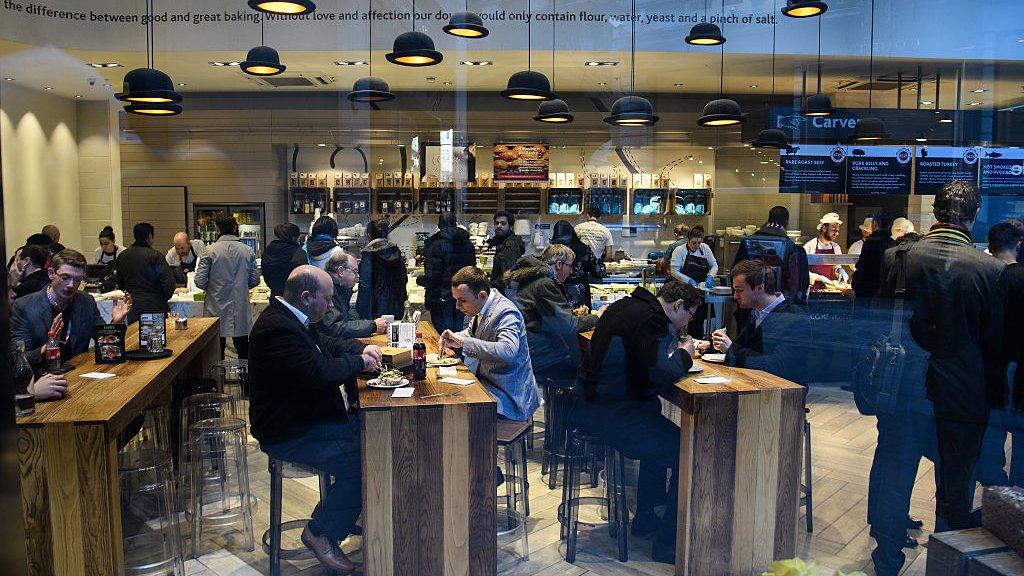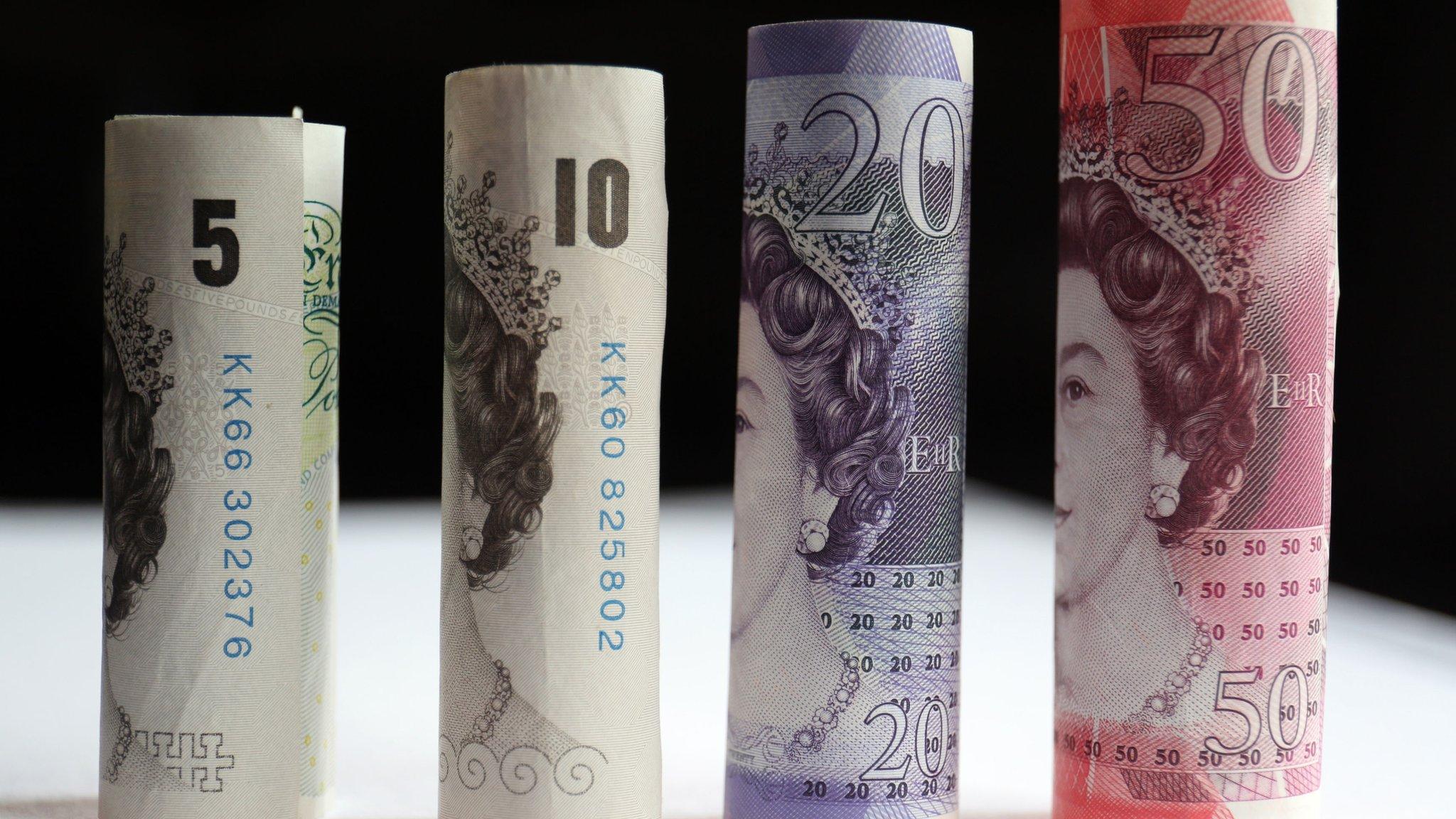UK services sector beats forecasts buoyed by new work
- Published

Activity in the UK's dominant services sector rose at a faster-than-expected pace in March.
The Markit/CIPS purchasing managers' index (PMI) for services rose to 55, compared with economists' expectations of a slight increase to 53.5.
The services sector, which accounts for three-quarters of the UK economy, said business activity and new work grew at the strongest rate so far this year.
However, cost pressures led to the fastest rise in prices since late 2008.
The pound rose 0.3% against the dollar to $1.2478 after the survey found that business activity expanded at the quickest rate since December.
Respondents were also optimistic about the year ahead, while there was evidence that the fall in the value of sterling since the Brexit vote had led to new sales inquiries from abroad and demand for overseas clients, especially in the US.
However, jobs growth was "only marginal", with some companies saying tighter margins and rising wage bills meant that they were not replacing those who had left.
Slower growth
Despite the rise in services activity, data out earlier this week showed that growth in the manufacturing and construction sectors eased in March.
Meanwhile, productivity figures released on Wednesday showed output per hour rose by 0.4% in the final quarter of 2016, and by 1.2% compared to the same period in 2015.
However, the Office for National Statistics said the rate remained below the pre-financial crisis average.

Chris Williamson, chief business economist at IHS Markit, believed that economic growth for the first quarter of 2017 would slow.
"The upturn fails to change the picture of an economy that slowed in the first quarter," he said.
"The relative weakness of the PMI survey data compared to that seen at the turn of the year suggests the economy will have grown by 0.4% in the first quarter, markedly lower than the 0.7% expansion seen in the fourth quarter of last year."
Ruth Gregory, economist at Capital Economics, estimates that UK GDP will grow by about 0.5% in the first three months of the year.
"Granted, the full adverse impact on the consumer of the forthcoming rise in inflation has yet to be felt. This was evident in the rise in the prices charged balance, which picked up once again to its highest since September 2008," she said.
'Impressive' rate
"However, we continue to think that the support provided by the lower pound and rock-bottom interest rates should prevent growth from slowing too sharply in the quarters ahead. Our forecast is for annual GDP growth of about 2% for the year as a whole."
Meanwhile, the PMI figure for eurozone's services sector industry came in at 56 - below a flash estimate of 56.5. That was still above the final 55.5 figure for February and was the highest since May 2011.
The final composite PMI figure for the continent, which is regarded as a good guide to growth, rose to a near-six year high of 56.4 in March from February's 56. The flash reading, at 56.7, had suggested a sharper rise.
Chris Williamson at IHS Markit said: "The expansion recorded by the final PMI numbers was not quite the growth spurt indicated by the flash release, but still points to an impressive rate of economic growth."
- Published3 March 2017

- Published22 February 2017
